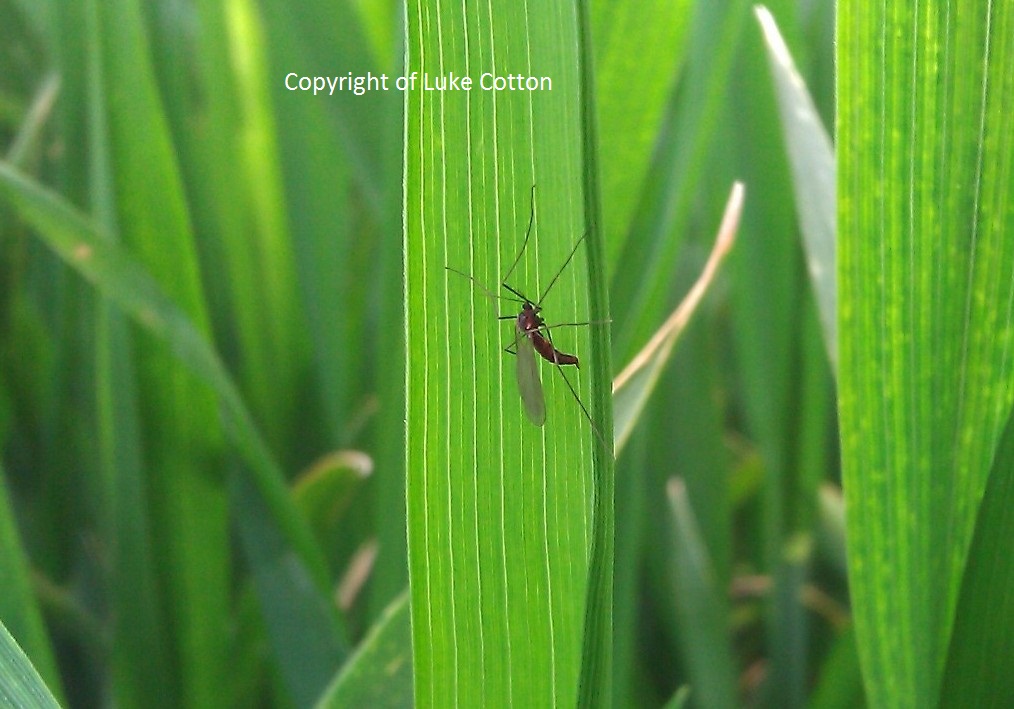
Just when Saddle Gall midge adult and eggs are being found in abundance in Gallant wheat in Buckinghamshire by independent consultant Luke Cotton, the results of a nationwide survey indicate that concern is growing for this pest right across the UK.
Conducted by a consortium of interested parties, Dow AgroSciences, ADAS, AICC, HGCA and NIAB TAG, the survey of 140 farmers and agronomists showed that 55% had seen direct evidence of Saddle Gall midge infestation in their crops.
Anecdotally the hardest hit counties have been Oxfordshire and Buckinghamshire, but the survey showed that infestations have also be a problem in Suffolk, Cambridgeshire, Devon, Gloucestershire, Yorkshire and Scotland.
The majority of respondents (70%) said that they had seen larvae in the top 20cms of soil or had seen the distinctive lines of orange to blood red eggs laid on the youngest leaves.
Nearly half (49%) had seen unexplained whiteheads in wheat that could not be attributed to disease and 42% had seen characteristic galls on the stems caused by the feeding larvae.
More concerning was that 52% of those surveyed that had reported signs of Saddle Gall midge had experienced subsequent yield losses at harvest. One farmer in Hertfordshire had 100% yield loss as a result of brackling. The survey indicated that yield loss occurred most often in continuous wheat (48% of respondents who experienced yield loss).
However 25% of yield-impacting infestations were in first wheat, indicating that Saddle Gall midge isn’t always a pest of continuous wheat and suggesting that an integrated management approach may be necessary.
Some farmers are already changing cropping patterns including altering rotations, introducing break crops and changing wheat varieties in order to reduce the impact of this pest. One example is that a farmer in Oxfordshire decided to make forage from his badly infected wheat crop in order to prevent the larvae returning to the soil.
Will Corrigan of Dow AgroSciences says that the survey was initiated as a direct result of concern being expressed by farmers and agronomists about this pest. "The survey confirmed that this concern is a lot more widespread that we had first thought. We had had some indication of its importance and incidence and this was why Dow AgroSciences and the HGCA commissioned ADAS to monitor Saddle Gall midge development this spring."
Will points out that there are no approved insecticides treatments for control of Saddle Gall midge, but that Dow AgroSciences has been pleased to lend its experience to and be associated with monitoring and research with the aim of looking for a solution to this pest problem in the future.
